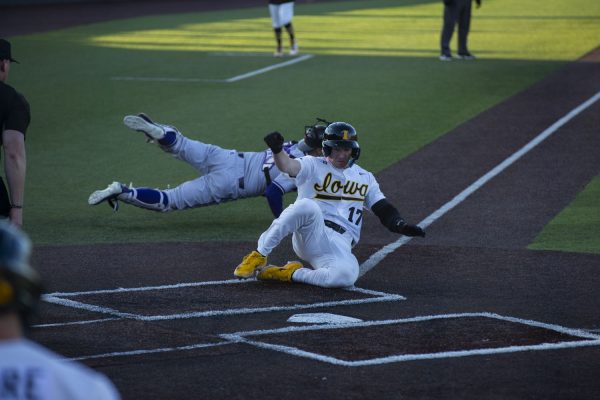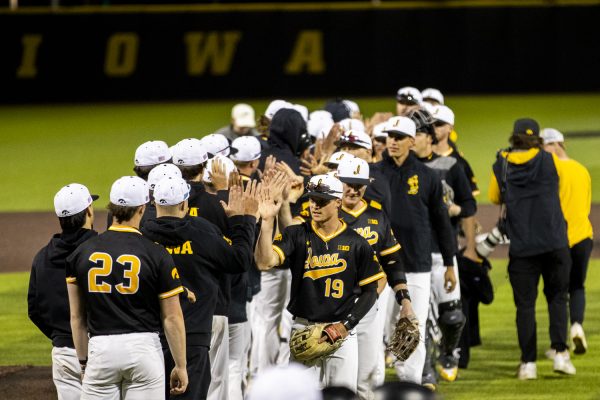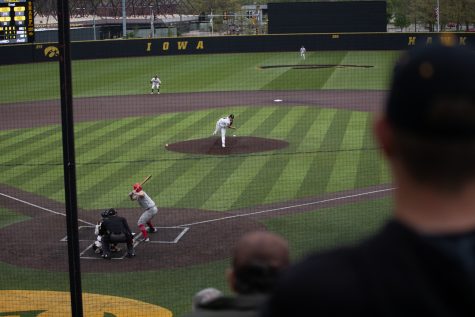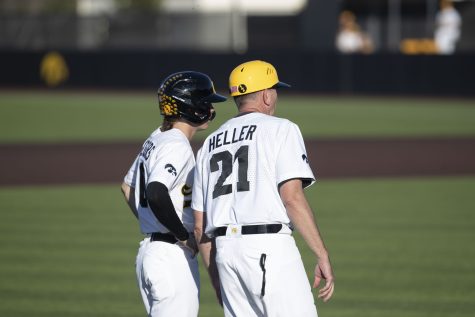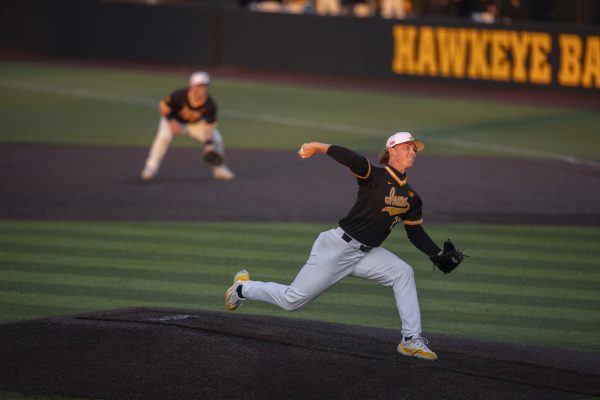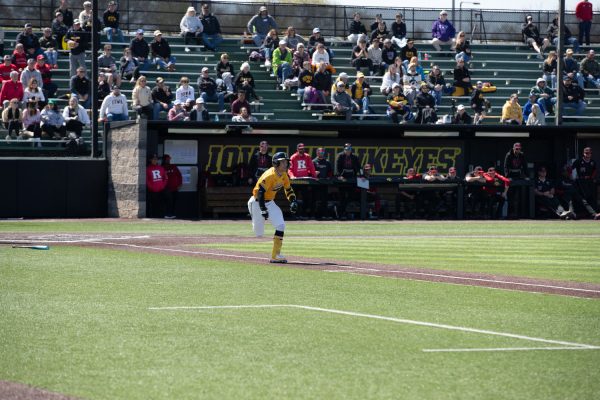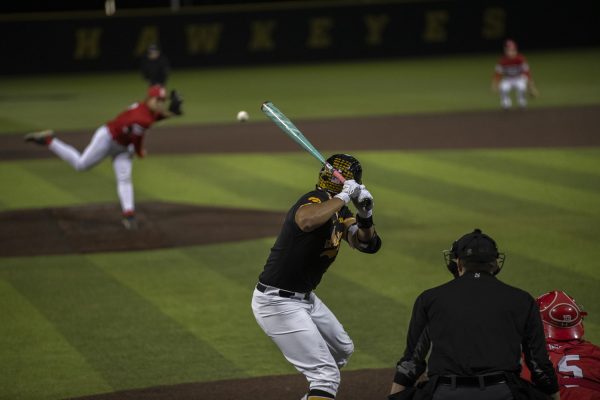Iowa baseball coaches discuss foreign substances at the collegiate level
With Major League Baseball’s recent push to crack down on pitchers using foreign substances, Iowa’s coaching staff discusses the use of substances in the college game.
Iowa head coach Rick Heller walks back to the coaching box after disputing a call with the home plate umpire during a baseball game between Iowa and Maryland on Saturday, April 24, 2021 at Duane Banks Field. The Terrapins defeated the Hawkeyes 8-6.
June 15, 2021
A recent jump in Major League Baseball pitchers’ spin rates and batters’ strikeout frequency has caused the league to reevaluate its rules regarding the use of foreign substances on the mound.
Historically, professional pitchers using substances like sunscreen and pine tar to get a better grip on the baseball has been a case of, “Don’t ask, don’t tell.” Pitchers benefit from having more control, and batters benefit from receiving more strikes and getting hit by fewer pitches.
“I think 10 years ago, every hitter in the major leagues would tell you, ‘Let them use it because we don’t want to get hit,’” University of Iowa head baseball coach Rick Heller said. “That’s why it’s been the dirty little hidden secret.”
In response to safety concerns with the old standard bat and in an attempt to limit home runs, collegiate baseball switched to Batted Ball Coefficient of Restitution (BBCOR) standard bats in 2011.
With the new change, college baseball saw a drop in offense across the board.
“They changed the bat, and with the high-seamed baseball that colleges used, the offense just plummeted to the point where it was hurting the game,” Heller said.
Instead of changing the bats again, the NCAA switched from the high-seamed baseball to the flat-seamed baseball — MLB’s standard. The flat seams create less drag on the ball and allows it to travel farther than a high-seamed baseball.
RELATED: Iowa baseball completes three game sweep of Michigan State
Heller said he believes foreign substances are much less prevalent in the college game than at the major league level, but college pitchers who are using substances like pine tar and sunscreen are likely doing so because the flat-seamed baseballs are harder to grip.
The additional tack foreign substances like pine tar or sunscreen provide can also help pitchers increase the spin rate of their throws.
Spin rate is measured in revolutions per minute (rpm), indicating how many rotations a ball makes after it is released. The spin rate of a pitch will have an influence on its trajectory.
If two fastballs are thrown at 96 mph but one of them has a very high spin rate, that pitch is more effective because it will repel gravity for longer and have a rising effect on the hitter. A curveball with a higher spin rate will have more movement, as well.
“It does kind of make a big difference for a pitcher,” Hawkeye hitting coach Jimmy Frankos said. “In the old days, you would say, ‘Man, that guy throws a heavy ball.’ Well, now a heavy ball is a guy with a high spin rate.”
Foreign substances like Spider Tack and Pelican Grip have been found to help pitchers improve their spin rates by as much as 400 rpm — which Frankos said could give hurlers in baseball leagues across the country unfair advantages over hitters.
“What I think needs to happen is that something has to become legal that is universal, that everyone can use, and that is not going to drastically give a pitcher an advantage,” Frankos said. “It’s going to give them enough so that we’re still throwing strikes and being able to control the baseball.
“When you are in these northern and midwestern states, you are playing a lot of games in 40 degrees. You are going to need a little help hanging onto the baseball when you’re throwing it 90 plus.”







